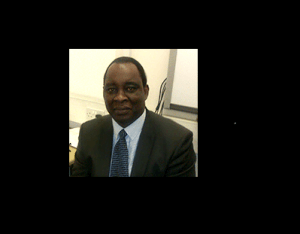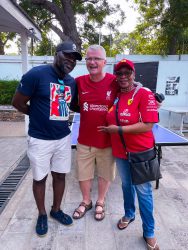- learn all you can about the customer, listen intently and share the knowledge to keep your teams aligned
Building a customer-centric culture calls for great commitment from the organisation’s rank and file. First, leadership must birth and live the culture, and then ensure that it gains buy-in throughout the business. A good analogy for this is the story of creation. In the beginning, (we are told in the bible) God created the Heavens and the Earth ……. and God said let there be light and there was light and God separated the light from the darkness.
This story portrays a process of transforming a situation from chaos to order. In the quest to start a customer experience agenda in your company, you clearly will have to go through a process that will see you journey from its inception, transitioning through building stages to fruition. The processes may vary depending on the nature of business; however, what’s instructive is that as much as you focus on being good designers, manufacturers, financiers, insurers, retailers and distributors, you also need to be focused on both the intermediate and ultimate customer needs.
Think of the first step in the journey – the inception. Here, you need a provisional governance to start with; a non-permanent, cross-functional and cross-hierarchical level team to tackle the basic steps. A recommended starting point, according to experts, is to develop a ‘constitution’ of sorts, known here as the Customer Experience (CX) Charter; next, you need to set up a governance structure, and then subsequently Action Teams and CX Activators.
The Charter
Core components of the charter encompass objectives and key tasks of the governance committee, highlighting what it intends to address for the organisation – defining scope and what is out of scope to ensure specificity in its focus. It also addresses how you measure success, by identifying the metrics to be used in this regard. A few common ones are Net Promoter Score, Customer Satisfaction Surveys to highlight a couple.
Furthermore, as CX is a cross-functional process, it is important as part of governance to assess which functional and hierarchical levels will be represented on the committee. A size ranging from 6-14 is recommended to ensure speed in decision-making. The roles to be played by members of the committee must be clarified to ensure harmony and consistency as you work toward goal attainment.
Craft out a supporting organisational structure to ensure success. This includes an executive committee, brand ambassadors and action teams. Work out how you recruit them and hold them accountable. Also, determine how your steering committee will communicate progress; how often and by what means. Set short-term goals that need to be accomplished (100-day action plan) and determine the investment in time, resources, materials to keep the momentum going.
Governance
This is usually a cross-organisational group with decision-making and organisational power. In fact, the true value of CX is unlocked when you have the whole organisation engaged in it. This way, the centre of your discussion board is your most important entity – The Customer. For example, if your call centre reports high complaint levels yet your sales remain either stable or even decline, you need to resolve the upstream challenge that is leading to the high customer calls. In effect, solutions are best achieved when there is collaboration across the organisation.
Leadership roles in CX emerge once the charter is in place; with goals, processes well documented, a governance council is eventually appointed. Those appointed to lead the organisation’s CX quest will perform in their role as a complement to their main functions within the business. These will mainly be people who have served the organisation long enough and have a good understanding of the internal culture, and are influential enough to carry the CX agenda all the way to the top.
They will frequently engage with executive management depending on the organisation’s size and structure. They are influential enough to clear barriers and influence the allocation of budgetary resources to keep the momentum going, in terms of keeping the customer satisfied and with internal processes and mindsets properly aligned. In some organisations, a Chief Customer Officer plays the pivotal role of driving the agenda.
According to David Fish (2021), the Chief Customer Officer (CCO/CXO) is charged with the following responsibilities: Leading initiatives and advocating for customers across the organisation; acting as company change and mentality agent; motivating frontline employees; using data to build a 360-degree view of the customer; focusing on not just retention but also growth; driving accountability for actions; and bringing customers into the company operations.
Action Teams
The CCO/CXO is supported by a team. Action teams are temporary cross-functional teams brought together to address customer problems or activities. Once the issue is resolved, these teams are dissolved. The criteria for selecting members of the team will depend on the nature of the problem. Thus, if the problem is in sales and marketing, that will inform the background of those who make up the team.
According to Shep Hyken – customer service and experience expert and author: “A big part of the CX team’s responsibility is to analyse every touchpoint that a customer has at every interaction they have — or could have — with any part of the journey they experience when doing business with the company”. The CX team’s role is to identify these interactions and make them better, easier, simpler – or even eliminate them. The leader sets the strategy and delegates the implementation to ensure customers have the best experience possible.
Over time, Action teams interface with and participate in the process of setting up CX teams to help install and maintain a customer-centric culture across the organisation. They educate the rest of the organisation about the customer and the customer experience, then align and unite the organisation around the customer. Their role being cross-functional, they partner with the CIO to ensure that the right data are accessible and shareable, and able to get to the right people at the right time.
CX Activators
The key to achieving customer-centricity hinges on your ability to ‘keep the ship sailing’, having discovered what keeps your customer satisfied. You have put a governance structure in place so there is a listening ear for the customer all the way up to the boardroom. You also have to put in place an Action team such that iteratively you are able to identify customer issues and put your charges behind their needs, driving the quest to resolve issues proactively.
Your Action teams eventually morph into frontline teams who are keenly following-up on the customer to understand their needs ‘outside-in’. The existence of a customer charter to ensure alignment with your experience-goals means that you are primed to keep an eye on the customer journey across all touchpoints. This is where the ‘rubber hits the road’. How do you keep an eye on the customer and stay focused on running the organisation routinely? Here come your CX Activators.
The activators are known variously, depending on the organisation and how it functions. The commonality here is that they will normally be mid-level and frontline employees charged with the role of serving as the eyes and ears of CX initiatives. They interface between the frontline employees and the CX leadership, providing regular feedback from the frontline to ensure that the planning and strategy forming are influenced by an apt understanding of the customer’s needs as they journey across the organisation’s touchpoints.
Fundamentally, CX Activators are an important communication and information link between both customers and employees – but be that as it may, the need to involve everyone in the organisation with conversations around the customer is imperative for the business that aims to be customer-centric. Ian Golding sums it up nicely with the following phrase: “An organisation that remains humble toward, and is interested in, its customers is inherently a customer-centric organisation”. So make the right call and aim to be customer-centric!
The challenging times birthed by the COVID-19 pandemic in 2020 have significantly influenced the way companies do business. Many businesses were compelled to put marketing initiatives on hold temporarily as they waited to see how things would pan out. However, this notwithstanding, personalising interactions, meeting customers in their moments, acting with empathy are still very prominent hallmarks of great customer experiences which shine even brighter in times of crisis.
The emergence of a formal governance structure for CX is an essential milestone for any organisation eyeing the future with a comprehensive growth strategy in mind. Experts opine that while there are many ways to start when designing and implementing CX governance, making the programme sustainable over time requires several critical steps. Firstly, you need to adopt a governance framework that allows the programme to be implemented and expanded incrementally while clearly highlighting all the components that will be in place when the programme expansion is complete.
Secondly, a nucleus of executives representing both business and IT must be in place to provide funding, resources, assist in prioritising governance initiatives and ensure that the governance goals correspond to overall corporate objectives. And finally, you must have an unambiguous set of roles, responsibilities and processes defined for the care and feeding of CX projects under governance.
The American musician Bruce Springsteen sums it up nicely: “Getting an audience is hard. Sustaining an audience is hard. It demands a consistency of thought, of purpose and of action over a long period of time”. My simple lesson from these wise words is: be deliberate about your CX agenda and stay focused.
 |
The Writer is a Management and Customer Experience Consultant. He can be reached on 059 175 7205, [email protected],
https://www.linkedin.com/km-13b85717
|










